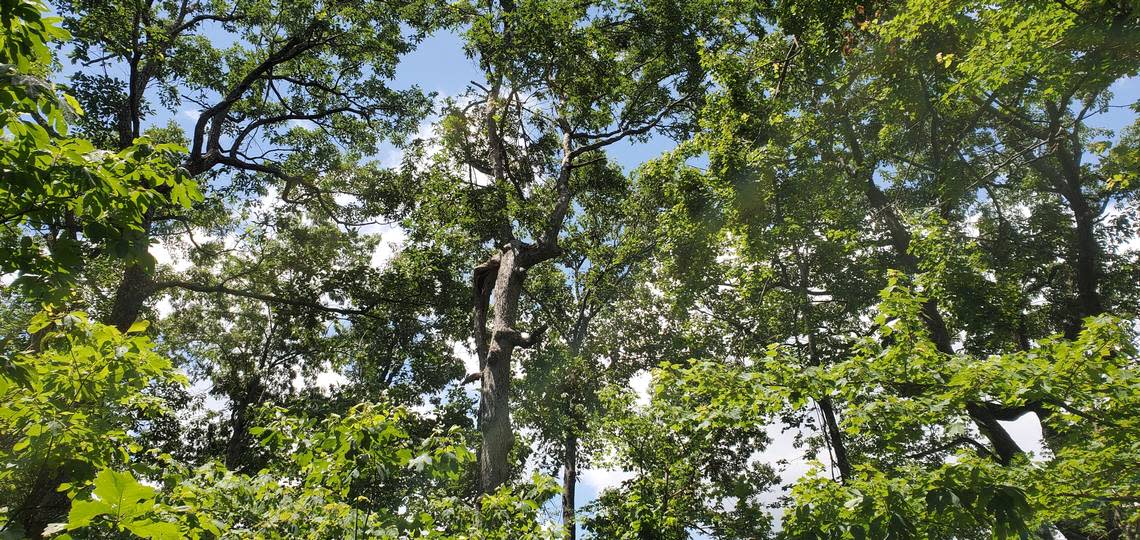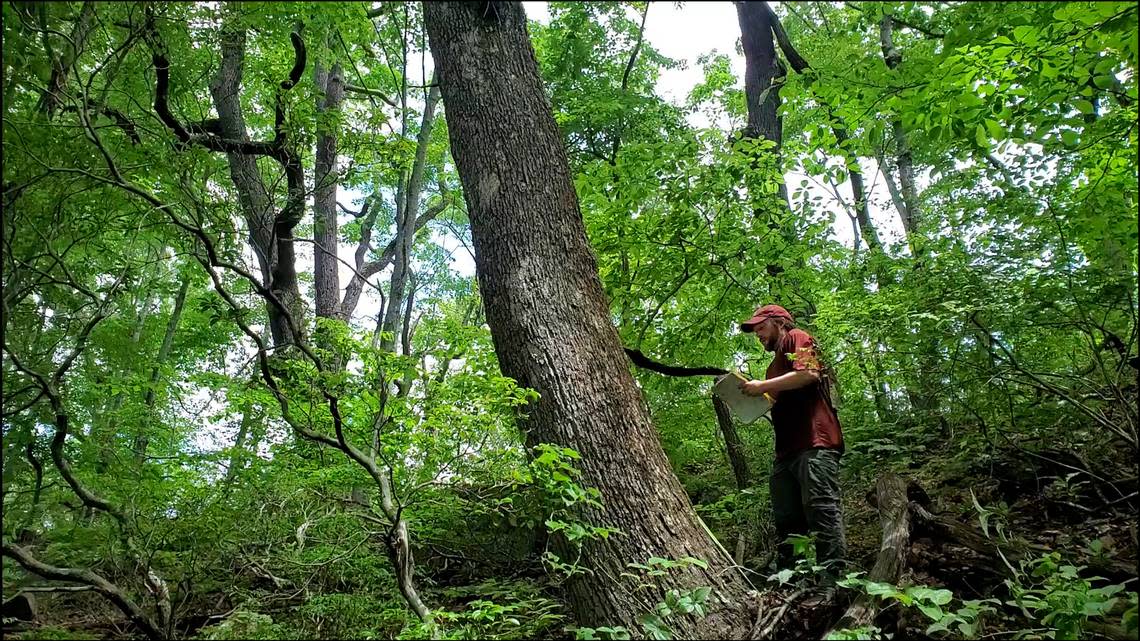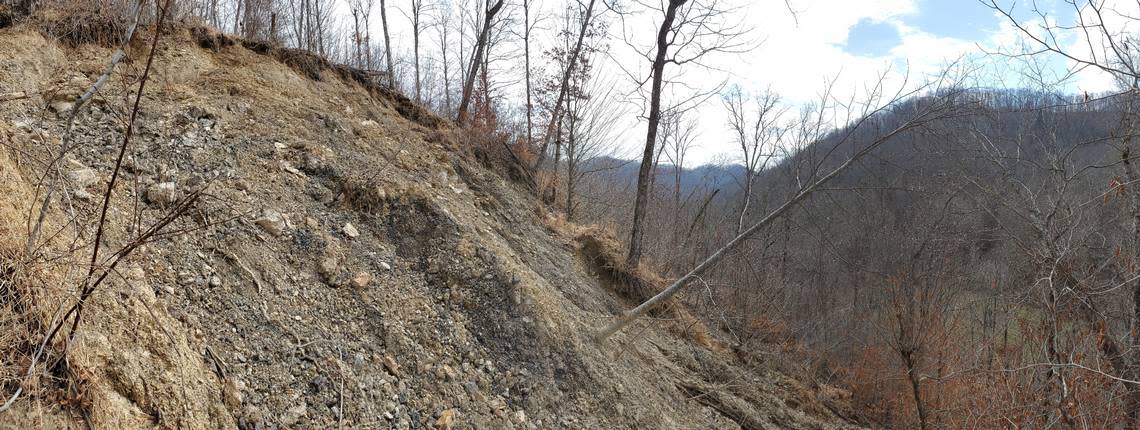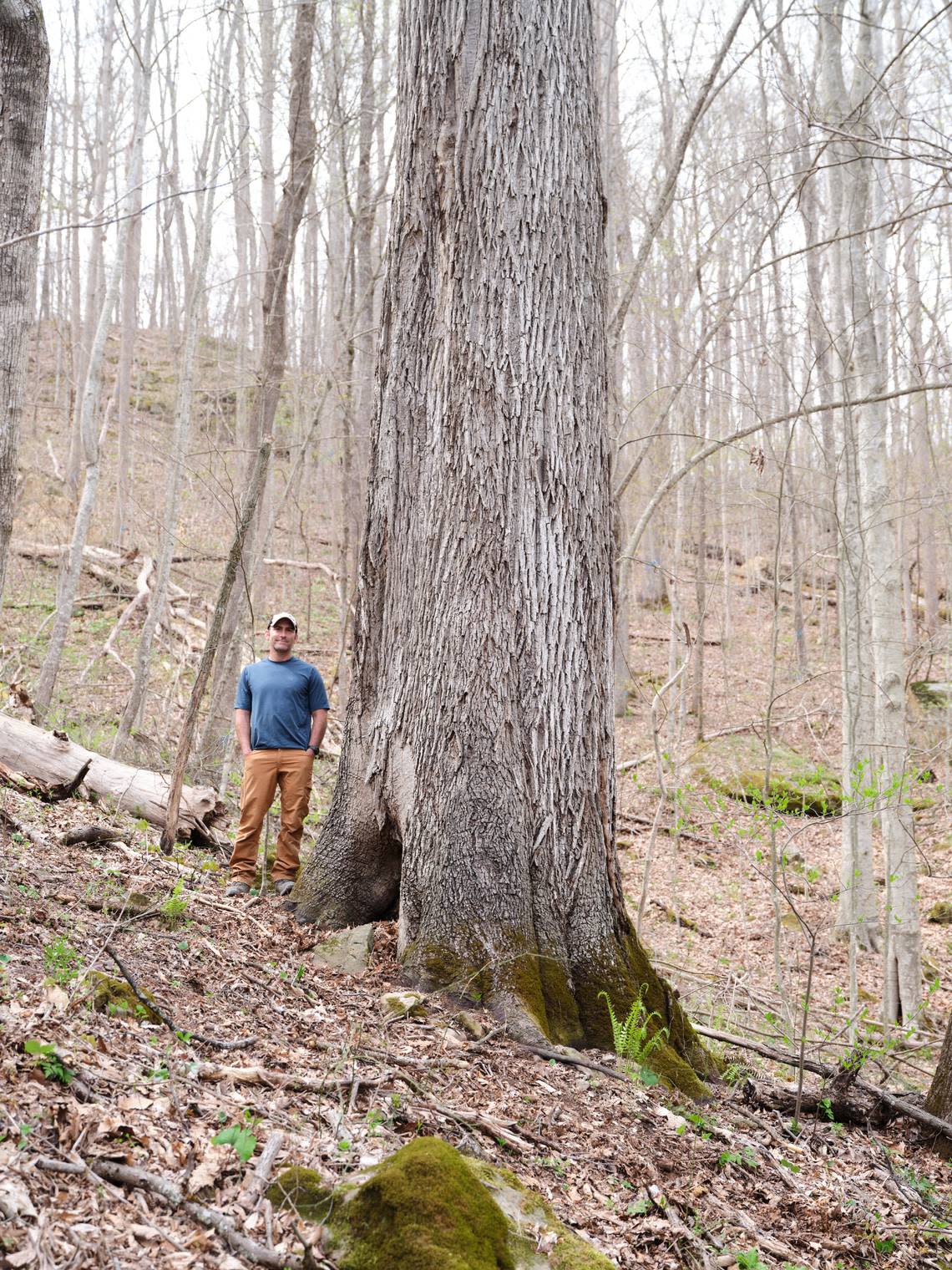Environmental group sues U.S. Forest Service over planned Kentucky logging project
Federal officials failed to follow the law in approving a logging project in the Daniel Boone National Forest in Eastern Kentucky that threatens bat, fish and mussel species and old-growth trees, an environmental group has alleged in a lawsuit.
The complaint alleges that the U.S. Forest Service used faulty methods in discounting the presence of old-growth forest in the area; did not use the best data in assessing the ecological impact of the project; and ignored or downplayed the risk of landslides that could dump sediment in streams and hurt threatened and endangered species.
The Forest Service wanted to justify the timber sale, the lawsuit alleges.
“That outcome is achieved at an enormous cost to protected wildlife, sensitive habitat, and other land and water resources,” the lawsuit says.
Kentucky Heartwood filed the lawsuit in federal court Sept. 12 against the U.S. Forest Service and several agency officials.
The Forest Service said it could not comment on pending litigation.
However, the agency has said in project documents that it carefully considered the potential impact of the project and concluded it would have no significant negative effects on plants, wildlife and aquatic life.
In addition to improving habitat, the project will bring economic benefits to the area, the Forest Service said.
“The area needs financial assistance from every source available, and no legitimate source of income can be ignored in an area with a poverty rate nearly twice that of the national average,” the agency said.

Kentucky Heartwood is a non-profit based in Berea. The lawsuit says its mission is to protect and restore the integrity, stability and beauty of Kentucky’s native forests.
The project at issue in the lawsuit is called the South Red Bird Wildlife Enhancement Project in Leslie, Clay and Bell counties.
It would include commercial logging, non-commercial tree thinning and the use of herbicide and prescribed fires on a total area of 12,000 acres, with the goals of promoting growth of high-quality oak trees and improving wildlife habitat and the quality of the forest, according to the Forest Service.
Kentucky Heartwood said commercial logging would take place on more than 3,900 acres, making it the biggest timber project in nearly 20 years on the Daniel Boone National Forest, which covers about 708,000 acres in 21 counties.
The project would involve removing 80% to 90% of the trees on 2,800 acres, Kentucky Heartwood said.
The two largest known red hickory trees in the world are in an area marked for logging as part of the project, Kentucky Heartwood said.
The lawsuit charges that the Forest Service failed to consider alternate methods that would have fewer environmental impacts; didn’t adequately consider all the potential impacts; based its decisions on erroneous information; and failed to consider some information.
Kentucky Heartwood’s complaints include:
▪ The Forest Service didn’t collect core samples from enough trees to make an accurate assessment of the amount of old-growth forest in the project area; avoided including trees that exhibit old-growth characteristics; and used average ages in stands to “obscure” the presence of old-growth trees.

For one stand of trees the Forest Service said was 65 years old, Kentucky Heartwood provided information showing large numbers of the trees ranged from more than 150 years old to more than 300 years, the lawsuit says.
The lawsuit alleges that the project would log almost 25% of forests more than 100 years old, “adding to the substantial deficit of older forests in the project area.”
The Forest Service has said the project area has more mature forest than desired under the management plan, however.
▪ The logging would not be done in a way that would boost growth of high-value oak trees, which is one of the goals of the project.
Similar logging in the district has allowed trees the Forest Service considers undesirable, such as tulip poplar, to flourish and compete with oaks, the lawsuit says.
▪ The Forest Service ignored the risk that logging and building access roads on the steep slopes in the project area will cause erosion and landslides.
Kentucky Heartwood has documented landslides in a section of the forest logged earlier just north of the Red Bird project area, including one that extended for more than 1,000 feet, according to the lawsuit.
The conditions in the proposed Red Bird project area and the types of logging that would be done are essentially the same as those in the area that was logged earlier, the lawsuit says.
The Forest Service allegedly used an incorrect calculation about the amount of steep land in the project area in assessing the risk of landslides, and didn’t revise the assessment after getting correct information that showed a greater amount of steep slopes.
The agency said the use of best-management logging practices would prevent landslides, but the examples it cited were from projects in places with different soil, slope and geologic conditions, the lawsuit argues.

The potential for landslides is a particular concern because they could dump sediment into waterways and hurt the Kentucky arrow darter, a small fish found only in streams in the upper Kentucky River watershed, the lawsuit says.
The fish used to live in at least 74 streams, but the population has gone down sharply to 47 streams, with critical habitat for the fish in the Red Bird project area, according to the lawsuit.
Sedimentation is a key source of stress on the darter and other aquatic species, and logging is one primary source of sediment, the lawsuit says.
The project also poses risks to the federally-protected northern long-eared bat; the Indiana bat, which is endangered; and the endangered snuffbox mussel, the lawsuit says.
“As increasing numbers of people look for outdoor places to experience the beauty of eastern Kentucky’s wildlands, and as the impacts of climate change and habitat loss in the region accelerate, the preservation of mature and old-growth forests on our public lands is all the more urgent,” Jim Scheff, ecologist for Kentucky Heartwood, said in a release.

The Forest Service has said in documents that it used the best scientific information in assessing the potential impact of the the project, and that the Daniel Boone National Forest has professionals on staff to ensure the project complies with federal law.
The agency also said the logging had been designed to reduce the risk of landslides and erosion and would be carried out best-management practices which would minimize any negative impact to the environment.
“All of us want what is best for the forest,” H. Scott Ray, then the acting supervisor of the Daniel Boone National Forest, said in a January 2021 letter. “None of us want landslides.”
In addition to creating forest conditions to benefit a variety of wildlife, the logging, tree-planting and other methods planned as part of the project would reduce the risk of catastrophic wildfires, the Forest Service has said.
The lawsuit asks U.S. District Judge Robert E. Wier to rule that the decision by the Forest Service to move forward with the project violated federal environmental law. The lawsuit also asks Wier to to block the project, require the agency to do greater analysis of the potential impact and award attorneys’ fees and costs to Kentucky Heartwood.
